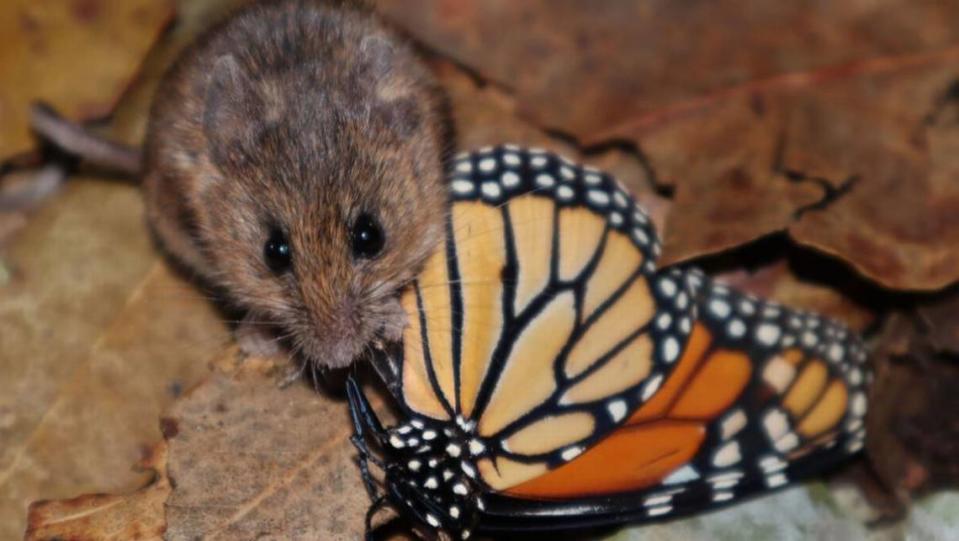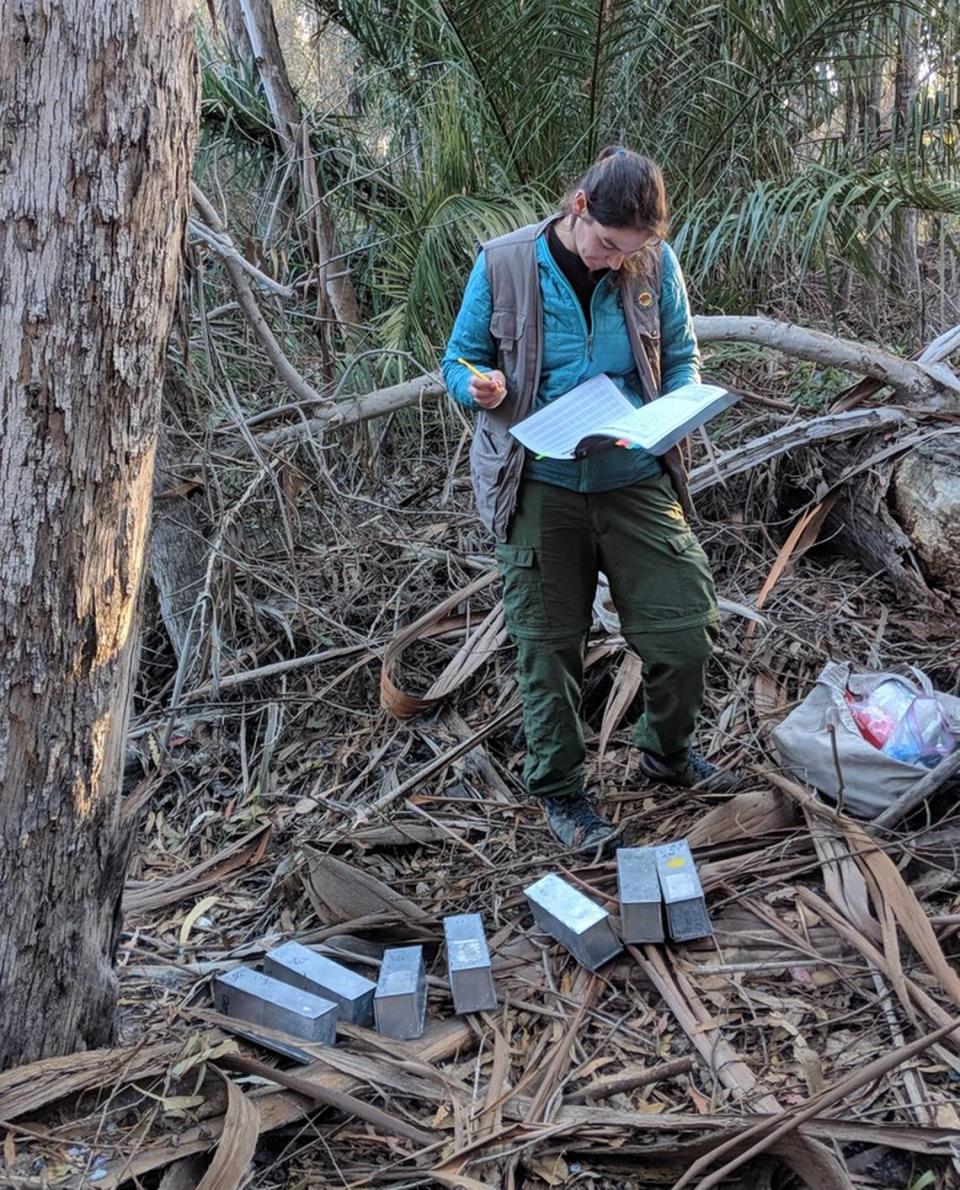Why are mice eating monarch butterflies in Pismo Beach? Here’s what researchers found
When you think of mice, you might picture them nibbling on pieces of cheese — not chowing down on monarch butterflies.
But that’s exactly what’s happening in the Pismo State Beach Monarch Butterfly Grove, where University of Utah researchers found that harvest mice sometimes eat the colorful insects that migrate there every year, according to a recent study they published in iin the journal Ecology.
“One of the things that this really highlights is, here’s a butterfly, an insect that we’re all so familiar with, we all know about. Just about every school kid in California knows about its life cycle and knows about its toxins, and it’s in everybody’s yard. And yet, here’s an interaction that we had no idea existed,” said Sara Weinstein, the postdoctoral researcher who helped author the study.

How researchers studied monarch-eating mice in Pismo Beach
Weinstein had been researching mammals that feed on toxic diets and became interested in studying animals that eat monarch butterflies. As caterpillars, monarchs eat plants with toxins, and the substances build up in their bodies and make them more less palatable to eat as butterflies, according to a University of Utah release on the study.
Weinstein, who grew up in Santa Barbara, initially considered studying monarch-mice interactions in Mexico — which has even larger populations of the butterfly than California. But she eventually decided to study the monarch grove in Pismo Beach, which can draw thousands of butterflies during the wintering season.
“How awesome would that be?” Weinstein asked. “If this interaction exists in our own backyard and it just hasn’t been documented yet?”
Weinstein and her team first visited the Pismo Beach grove in February 2020. The researchers started by catching mice to learn which types live in the area. They also collected mouse droppings for DNA testing, which would provide information about their diets.
The team did find a sample that contained monarch DNA. However, there weren’t as many butterflies toward the end of the winter when they visited, so Weinstein decided to come back around Thanksgiving.
But biologists counted only about 200 monarchs at the Pismo Beach grove in mid-November to early December 2020 — a significant decline that raised serious concerns about the species’ survival.
The Xerces Society for Invertebrate Conservation said wildfires, changing temperatures, more pesticide use and an “unusually high number of reports of non-migrating monarchs raised in captivity” were some of the factors for the low count.
Weinstein and her team forged ahead, however, even with fewer monarchs. They opted to plant dead butterflies that were lab-raised to see if they could capture videos of mice eating the monarchs.
Weinstein set up the monarchs under camera traps and, sure enough, got footage of mice chomping on butterflies. She also briefly captured mice and held them in a container with dead butterflies to see how they would interact.

Why do mice eat butterflies?
Weinstein said mice and other animals can be more omnivorous than most people might think. They likely brave monarchs’ toxins because the insects’ bodies contain nutrients that are beneficial for mice.
Most of the toxins are also in the wings, not the body, so mice can avoid the most poisonous area when they’re eating. Some rodents also have genetic mutations that make them less susceptible to toxins than other animals or humans.
“You can bet, like most insects, the body has got all this stored fat,” Weinstein said. “So for a mouse, if you can handle the toxins and avoid the wing, there’s quite a bit of nutrition in that body.”
She said the monarch-eating mice are not a factor in the recent decline in the migrating population. The mice likely eat monarchs that fall out of trees and onto the ground, especially during storms. The butterflies can be too cold to fly away, making them easier for mice to eat, Weinstein said.
The migrating monarch population bounced back in 2021, when biologists counted more than 22,000 butterflies at the Pismo Beach grove. They told The Tribune in November the rebound was “kind of amazing” and “a hopeful sign.”
Even so, the migration count at the grove has been low during the past five years, so biologists were cautiously optimistic about the recent turnaround.
Weinstein said the fact that a mostly unexplored feeding relationship exists between monarchs and mice shows “how little we know about food webs, in general, and interactions with insects and their predators or scavengers.”
“When you start extrapolating that out to how many insects species there are out there and how little we know about all of them, I think it just really highlights the need for more basic research to understand these interactions,” Weinstein said. “Especially given the reports about the decline in insect species worldwide, particularly flying insects.”

